A New Era of Automotive Technology Prius
21 Nov 2015
The internal combustion engine has been the dominant power source for cars for over a hundred years, leading to our reliance on cars as the most favored means of transportation.
(1st Generation Prius rear logo image)
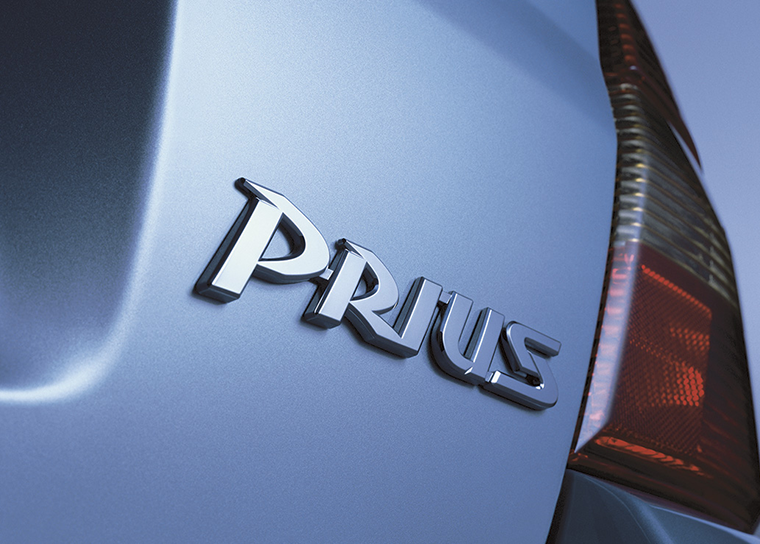
We can use our cars to go anyplace we like, anytime we like. When it’s hot outside, we’d rather get in a comfortable air-conditioned vehicle to drive to the local store than endure a long, sweaty walk. But gasoline engines burn fossil fuels and release greenhouse gases, especially CO2, into the atmosphere. Ultimately, these gases contribute to global warming.
But what if you could halve your fuel consumption? Not only would you be helping save the environment, you would be going to fill your tank less often, saving time and money. You would be getting a lot more for less.
That’s why the Prius is so important—it doubles fuel economy.
(Prius on the road image)

The Breakthrough That Took More Than A Century
Early inventors experimented with various ways to power cars. Steam and electricity weren't practical then, so manufacturers went with the gasoline engine which had been invented in 1876 and outperformed them. The internal combustion engine caught on in a big way, and over the years was improved. Manufacturers worked hard to improve both performance and fuel efficiency.
But fuel economy posed a problem. Progress was slow, with incremental improvements of only a few percent at a time. It would be many years before it became possible to make the drastic improvements necessary.
The much-awaited breakthrough finally came in 1997, with the arrival of the Prius and its new hybrid system. A magical solution had been found, and the Prius became the world’s first mass-produced hybrid, cutting fuel consumption in half for drivers the world over.
Pre-World War II image
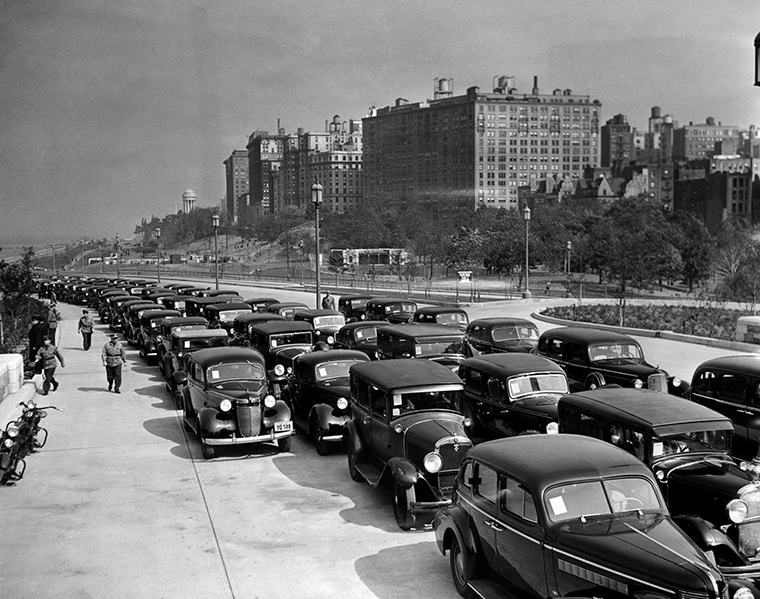
After World War II image
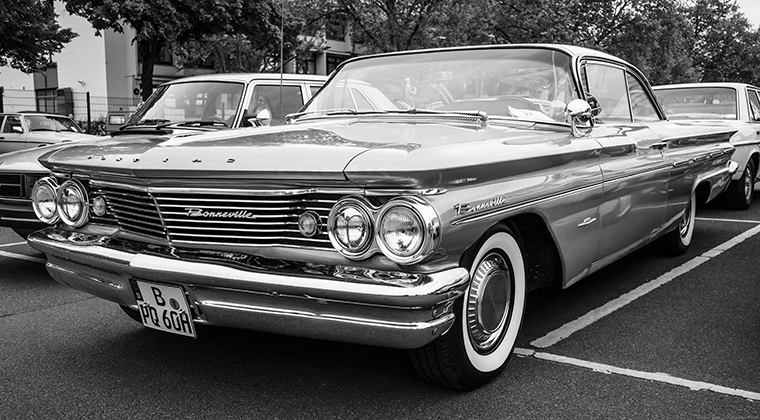
Recent Years image

Hybrid Pioneer—Venturing Forth into Unknown Territory
Let's take a trip back in time to twenty years ago.
Back in early 1995, the G21 Project team was working on developing a next-generation passenger vehicle. Although under strict instructions to 'double the fuel economy', they knew that improving the gasoline engine by itself would at best yield an improvement of 1.5 times. The only way they could achieve this highly ambitious target was to adopt a hybrid system—which hadn’t actually been developed yet.
Around the same time, another project was being run in parallel with the G21 Project. A small team of elite members had been set up to study the potential of hybrid technology. The team had been working on creating a unique hybrid system, and simulations had showed that it could actually be capable of doubling the fuel economy.
At the time, however, it was still just an idea. A physical prototype hadn’t even been produced yet. Nonetheless, seeing that the hybrid system clearly had the potential to achieve their aims, the G21 Project team decided to stake everything on adopting this new approach.
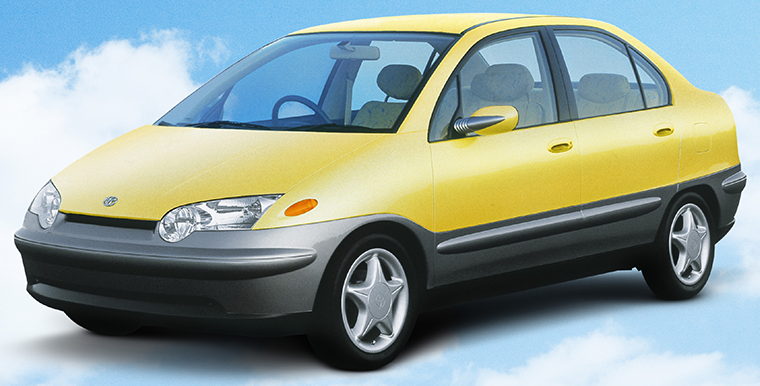
Prius concept car (Tokyo Motor Show 1995)
The hybrid system was still only an idea, so the concept car was equipped with a 'pre-prototype' system.
The Elegant Solution: THS (Toyota Hybrid System)
Unlike conventional vehicles that have just one power source, a hybrid system is composed of multiple power sources such as a gasoline engine and electric motors.
With so-called “series” hybrids, the gasoline engine drives a generator, which in turn drives the electric motor used for driving the wheels. “Parallel” hybrids, as the name suggests, are driven by an electric motor and gasoline engine simultaneously. However, they cannot generate electricity when the electric motor is driving the wheels, and vice versa. Each of these has advantages and disadvantages, so the Prius development team decided to combine the best features of both with a “series-parallel” hybrid.
Basically, around town you will mostly be using the electric motor, and on the highway mostly the gasoline engine. When accelerating, you use both. This allows you to halve your gasoline consumption—without sacrificing performance in any situation.
THS is simply the most elegant solution to the widest range of needs.
The fourth generation Prius essentially has the same yet more advanced Hybrid system than the first generation, which basically comes with gasoline engine, power split device, electric motor, generator and battery.
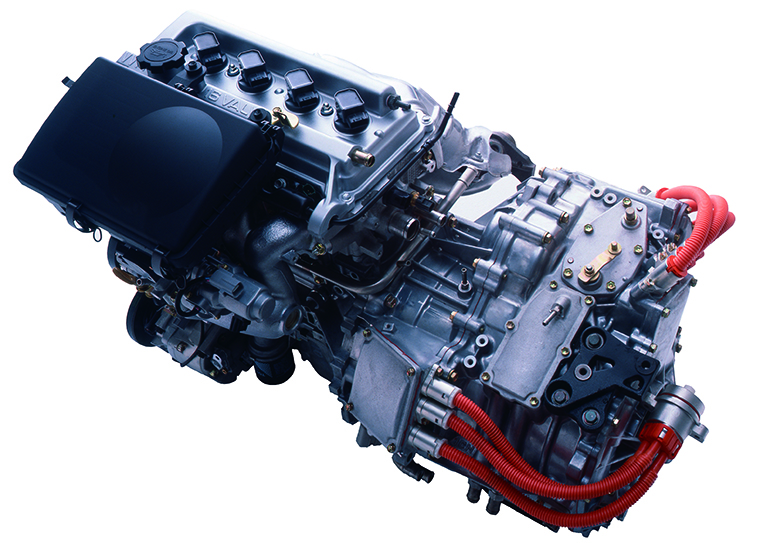
(1st Generation Prius Engine image)
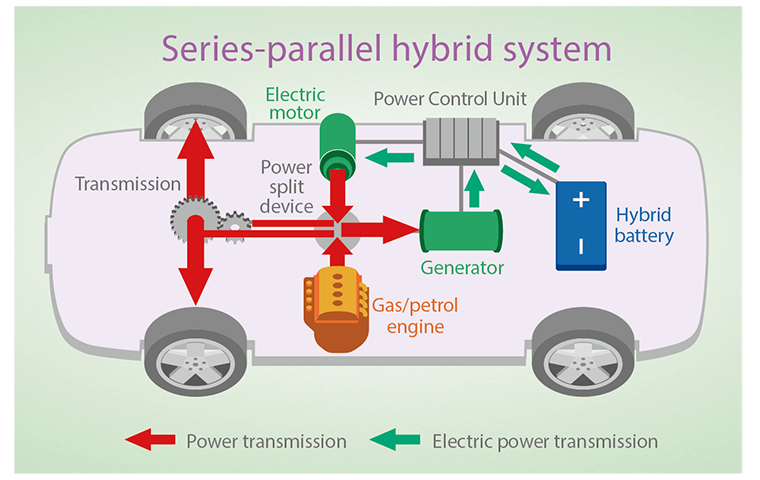
(Series Parallel Hybrid System image)
How the Prius Does It
Fuel consumption is not just relative to how fast your wheels turn. When you start or accelerate, for example, you use more gasoline to overcome inertia. That is why city driving with the stop-start of heavy traffic, traffic lights and stop signs can consume so much fuel. With the Prius, you are mostly using the electric motor in the city. Driving is smooth and effortless. But you get maximum torque when you need it because torque is not dependent on engine revolutions. That is why elevators and electric trains start so smoothly.
Since you can draw on both power sources at the same time, you also get excellent acceleration. At low speeds, the electric motor powers the vehicle. When the Prius accelerates, both the electric motor and the gasoline engine drive the wheels.
Add to this “regenerative braking”. The electric motor assists with braking, saving wear and tear on the regular brakes. It is used to absorb energy in deceleration and also to drive the generator used for charging the battery.
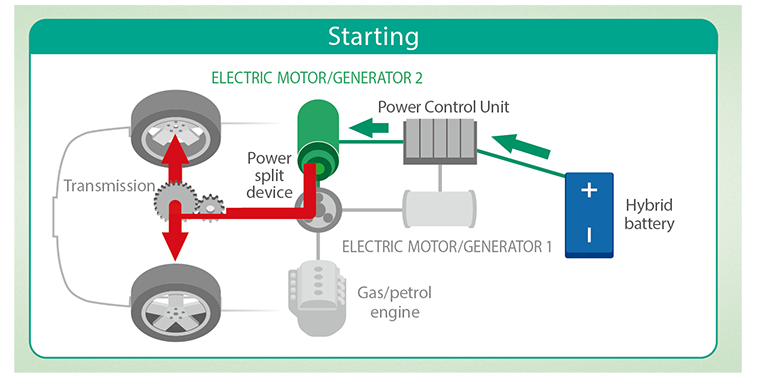
|(Motor Generator Starting image)
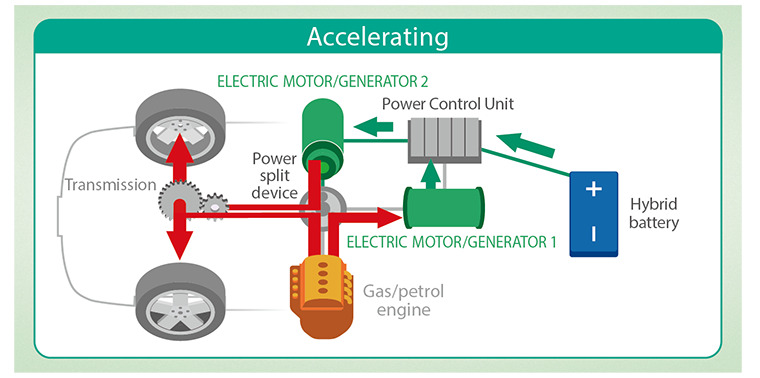
(Motor Generator Accelerating image
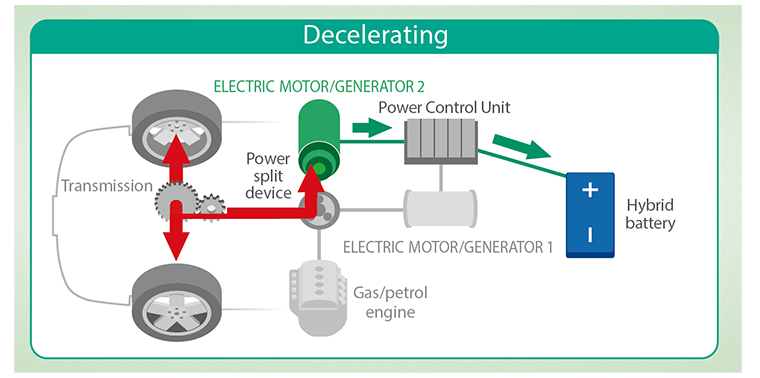
(Motor Generator Decelerating image)

(Motor Generator Arrows image)
Two Years of Herculean Efforts
Once all the technological elements are in place, it normally takes at least three to four years to develop a new vehicle. The first hybrid was developed in just two years—a miraculous achievement. Looking back, one developer says, “The development period was crazy short—overall, it was a crazy project! The Prius development project followed a truly unprecedented path. While developing the vehicle itself, the team had to simultaneously develop the hybrid system, which was still at the research stage.
The Power Control Unit is equivalent to the engine of a conventional vehicle. Being comprised of components such as an electric motor and inverter/converter, it would normally be developed by an electrical equipment manufacturer. But the Prius development team realized that entrusting this key technology to an external supplier could put Toyota's future at risk as an automaker. They decided that it should be developed in-house and all members of the team strived as one, working 24/7 to make this new technology a reality.
In spite of the seemingly impossible challenge, the team felt confident and were committed to meeting the deadline. They were totally dedicated to fulfilling their mission to create this new technology. You can imagine their satisfaction when the world’s first mass-produced hybrid—the Prius rolled off the production line in December 1997. They knew the next one hundred years belonged to this vehicle.
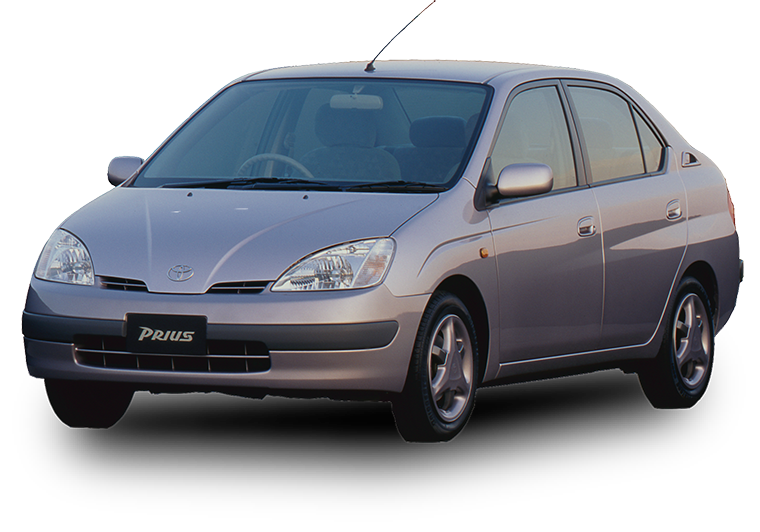
(1st Generation Prius image)